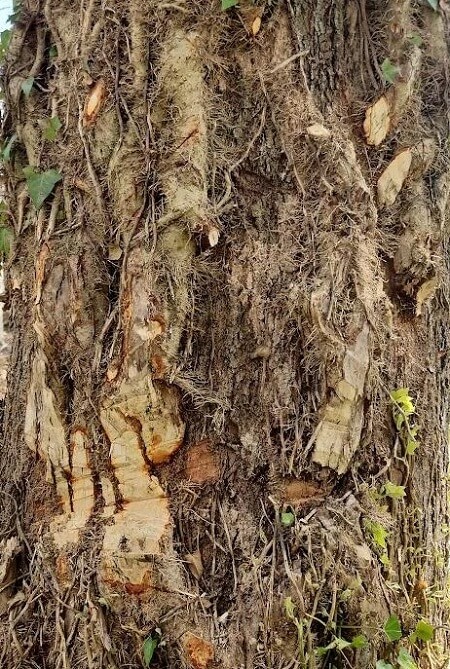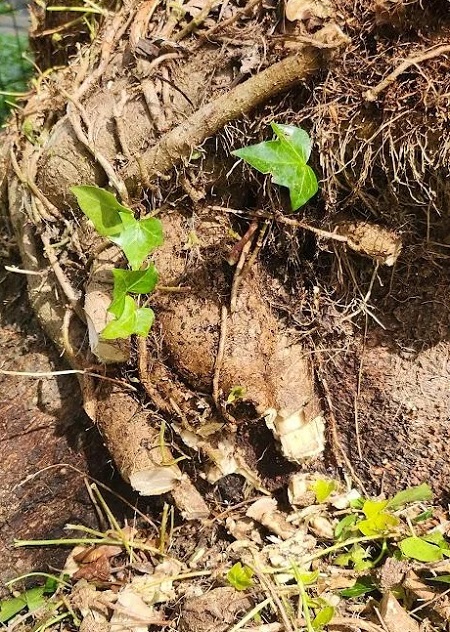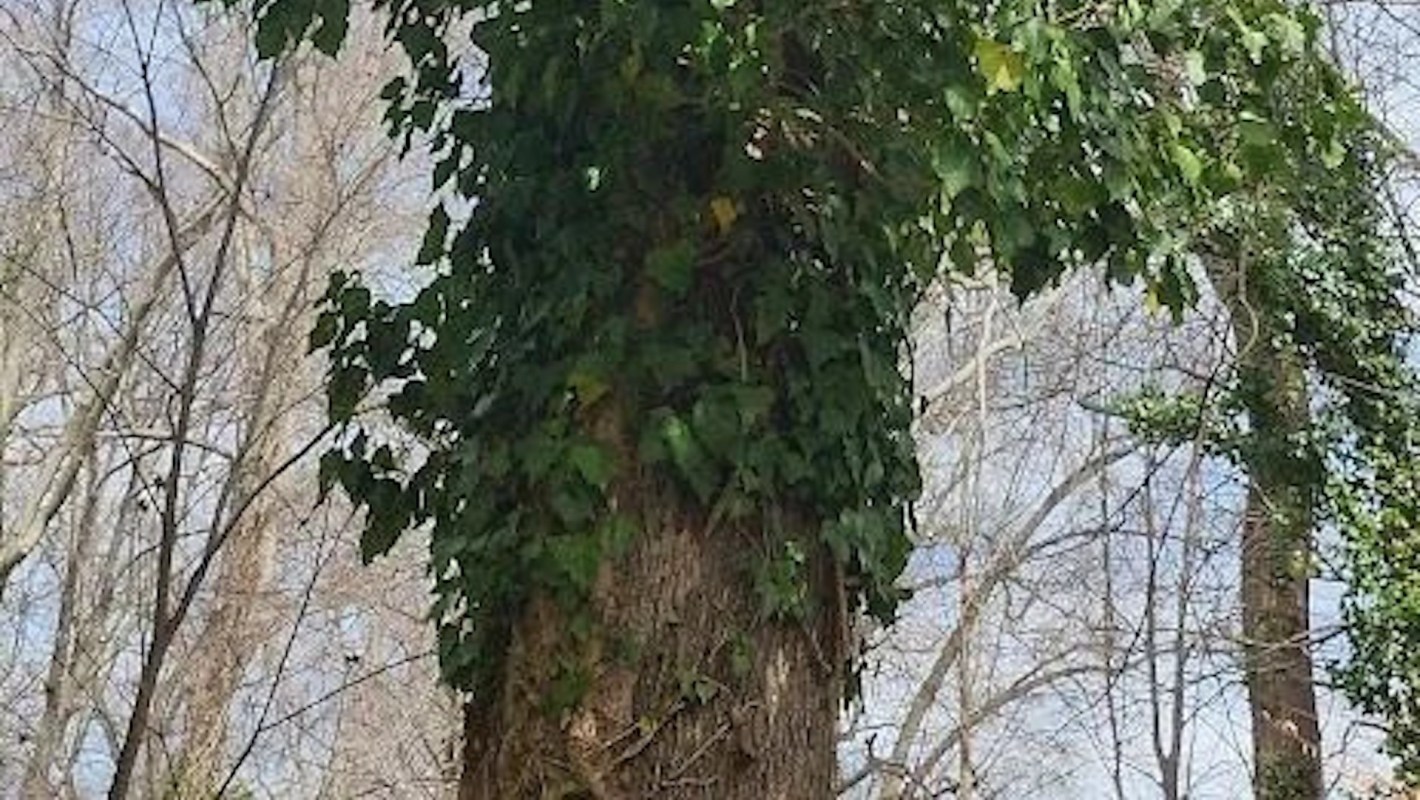A homeowner shared photos of their ongoing battle with an invasive plant species that has their tree in a chokehold.
Posting to the r/NativePlantGardening subreddit, the Redditor showed a mass of English ivy wrapped around their tree's trunk.


Using a machete, they hacked at the ivy's thick tendrils, digging the mother vine out from under a Japanese barberry bush.
"The mother vine wrapped almost all the way around the base of the tree," they wrote in a caption.
European colonists first brought English ivy to North America in the 1700s, and it has been a menacing presence ever since.
English ivy is an especially aggressive invasive species, which is a threat to plants and trees wherever it settles.
It wraps itself tightly around tree trunks, snaking under the bark so that it cannot be ripped off without wounding the tree's protective layer (bark protects trees from insects and diseases).
The ivy's density can block sunlight from reaching the tree, limiting its ability to photosynthesize, while its weight can topple the trunk of weaker trees.
Getting rid of English ivy involves locating its roots and digging them out of the soil. This can be difficult, but gardeners must make sure the roots and sprouts are completely removed to avoid any growth.
In its place, gardeners can benefit from growing native plant lawns, such as buffalo grass, clover, or purple lovegrass.
Because these grasses are native to North America, they require less maintenance and water to grow. This saves homeowners both time and money — even if the native grass only covers a portion of their backyard.
For now, the Redditor may be victorious over the malevolent English ivy, but others have warned that it may take time for the plant to disappear completely.
"Expect the vines to take a year to die," one advised. "They seem to be able to retain rainwater in the fibrous mats that hold them to the bark and stay alive a long time."
"That happened to me too," another chimed in. "I cut vines as thick or thicker than these and the leaves took ages to fall. I think it was midsummer heat that killed them; they easily survived all of winter and spring."
"Mine is going on 5-6 months or so, and it's only now starting to really look close to death," another wrote. "A lot of the leaves came off during windy storms, and what's still on the tree is droopy and turning brown."
Join our free newsletter for easy tips to save more, waste less, and help yourself while helping the planet.









